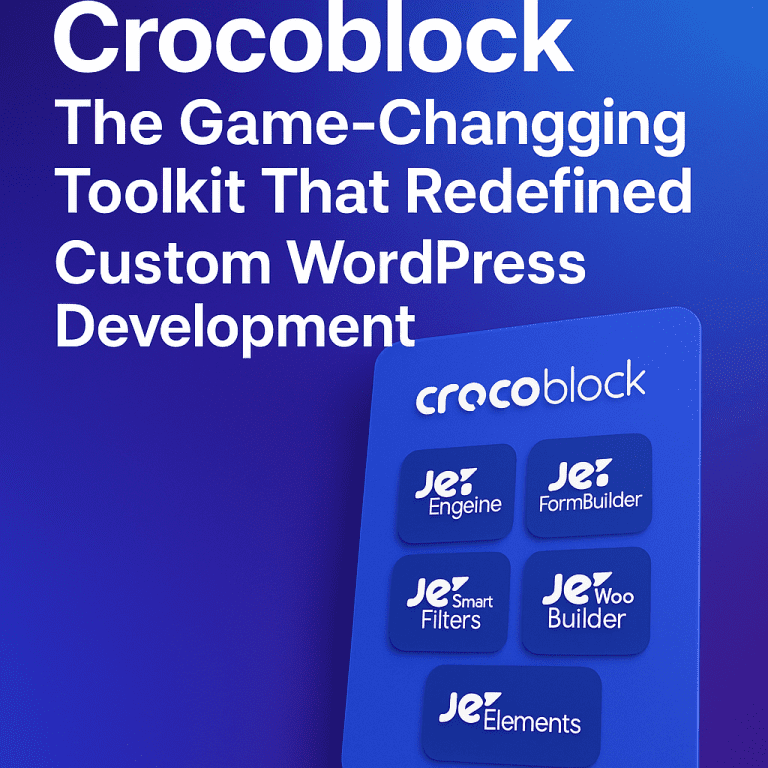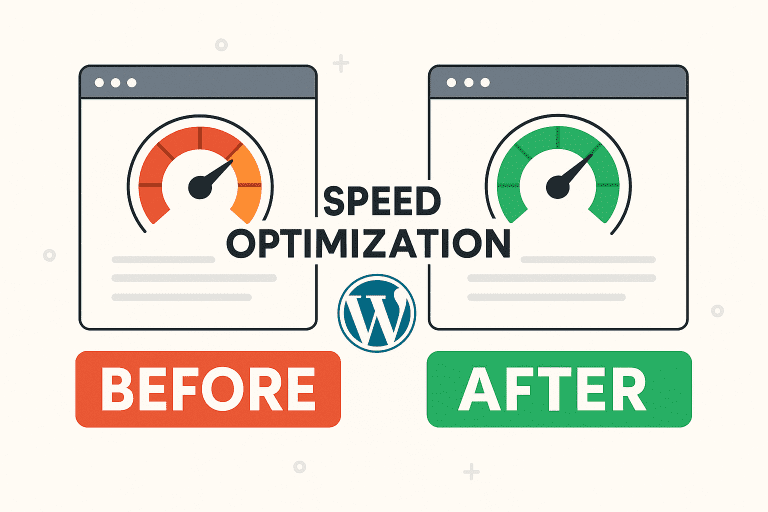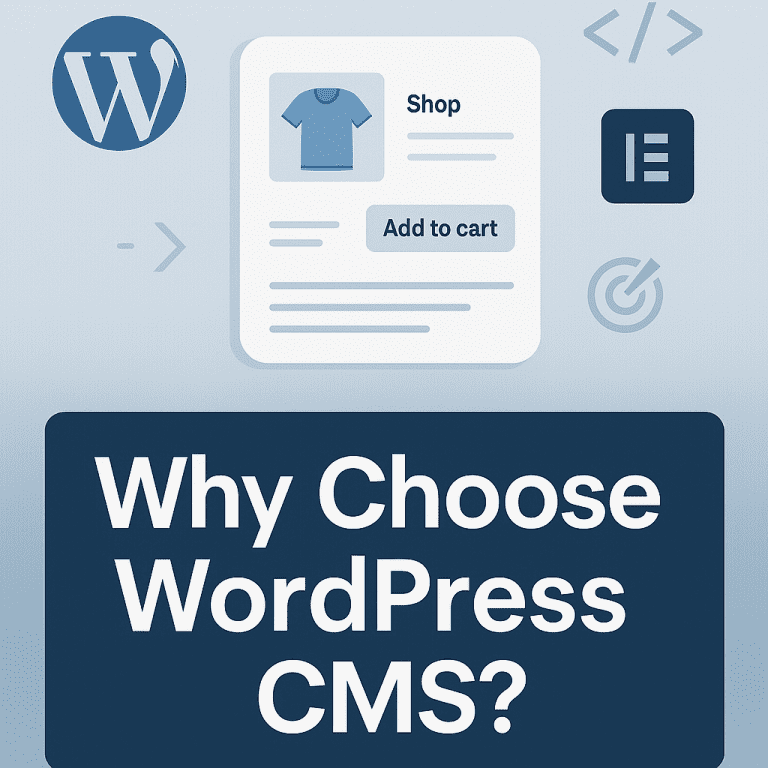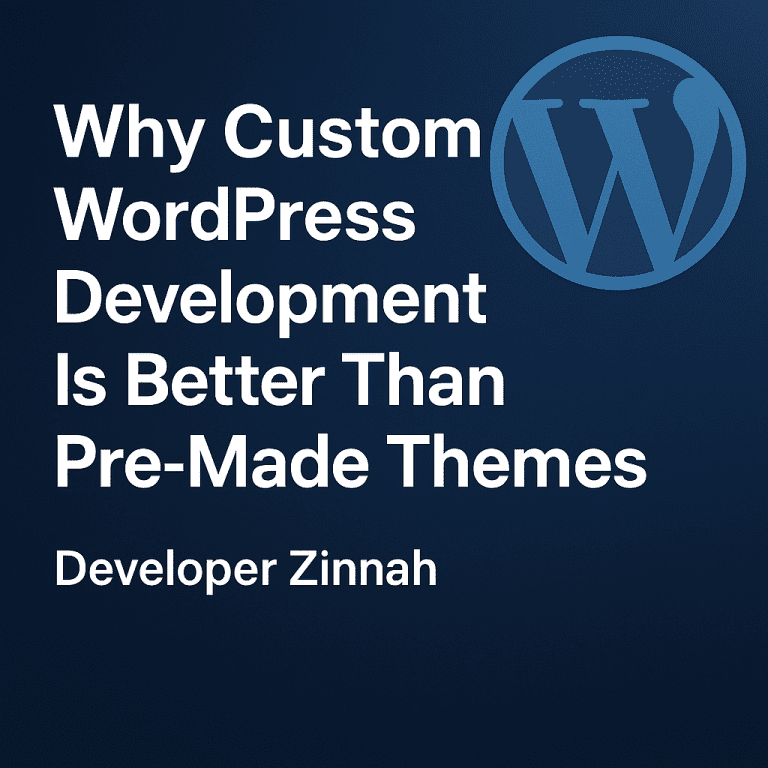How I Optimize WordPress Speed Without Breaking Design
Site speed isn’t just about faster loading — it’s about user experience, SEO, and conversion too. Slow sites repel users, hurt your Google rankings, and hurt the reputation of your brand. But if you’ve ever tried to make a WordPress site load faster, you know one big challenge: improving performance without breaking design.
Being a professional WordPress developer with over 10 years of experience, I’ve helped hundreds of customers speed up their sites without sacrificing quality, functionality, or appearance. In this post, I’m going to walk you through my method of optimizing WordPress speed – the right way.
Why Speed Optimization Matters
Speed is no longer an option. Google officially considers site speed a ranking signal, and studies show that a one-second lag in page load time can reduce conversions by up to 20%. But optimization is not about disabling functionality haphazardly — it’s about smart, secure improvements.
My Step-by-Step Speed Optimization Process
- Start with a Performance Audit
I always start by performing a comprehensive site audit through tools such as Google PageSpeed Insights, GTmetrix, and WebPageTest. They assist me in determining what’s causing the delay: big pictures, render-blocking scripts, unnecessary HTTP requests, or poorly constructed themes/plugins. - Optimize Images Without Compromising Quality
Most websites are also infested with uncompressed images. I compress and convert images via tools like TinyPNG or WebP conversion without compromising their look. That alone can halve load time. - Minify & Concatenate CSS & JS
Minifying the CSS and JavaScript files reduces the file size and enhances loading time. However, I always refrain from combining the scripts that conflict with each other or affect Elementor animations and layouts. I trial every option with care. - Use Caching Wisely
Caching is a good method to reduce server load and load pages faster. I use plugins like WP Rocket or LiteSpeed Cache depending on the hosting environment. They cache pages, optimize database, and control lazy loading effectively. - Defer or Delay JavaScript Execution
I defer non-essential JS (e.g., analytics, chat widgets, etc.) so that main content loads first. This improves Largest Contentful Paint (LCP), which is one of the key Core Web Vitals. I do not defer scripts required for your theme’s layout or interactive behavior. - Use a Light Theme
If a site is on a bloated theme, I typically recommend switching to a light one like Hello Elementor, Astra, or a custom theme. This gives me complete control over what loads — and what doesn’t. - Eliminate Unused Plugins
There are too many plugins. I disable or replace heavy plugins with lighter or custom-coded plugins. This keeps the backend neater and the frontend faster. - Host on a Fast Environment
Even with all optimizations, a slow hosting server can destroy your speed. I always recommend optimized WordPress hosting (like LiteSpeed, Cloudways, or SiteGround) for best performance.
How I Keep Design During Optimization
This is where most developers go wrong — they make the site faster but break the layout, remove animations, or disable sliders and scripts the design depends on.
Here’s how I keep it all under control:
- Test after every step on a staging site
- Leave necessary layout scripts and CSS in place
- Do not delete animation libraries unless alternatives are included
- Use manual exclusion rules with optimization plugins
- Regular design backups
- Collaborate with designers if necessary
My goal is always to get your website faster — without sacrificing your brand, style, or functionality.
Real Results from Real Clients
One of my customers had their WooCommerce site developed on Elementor and a pre-built theme. Post the full speed optimization, the page load time reduced from 7 seconds to under 2.5 seconds — with not even a single design compromise.
Google PageSpeed score improved from 38 to 92 on mobile and the bounce rate decreased by 35% within the following week.
Final Thoughts
Speed optimization is not about shortcuts. It’s about smart technical adjustments that respect both performance and design. Whether you run a personal blog, business website, or eCommerce store — performance matters.
If you’re tired of a slow WordPress site that looks great but lags behind, I can help you get the best of both worlds: speed and style.
—
Written by Developer Zinnah
Custom WordPress Expert | Performance Specialist
developerzinnah@gmail.com | www.zinnahali.com





